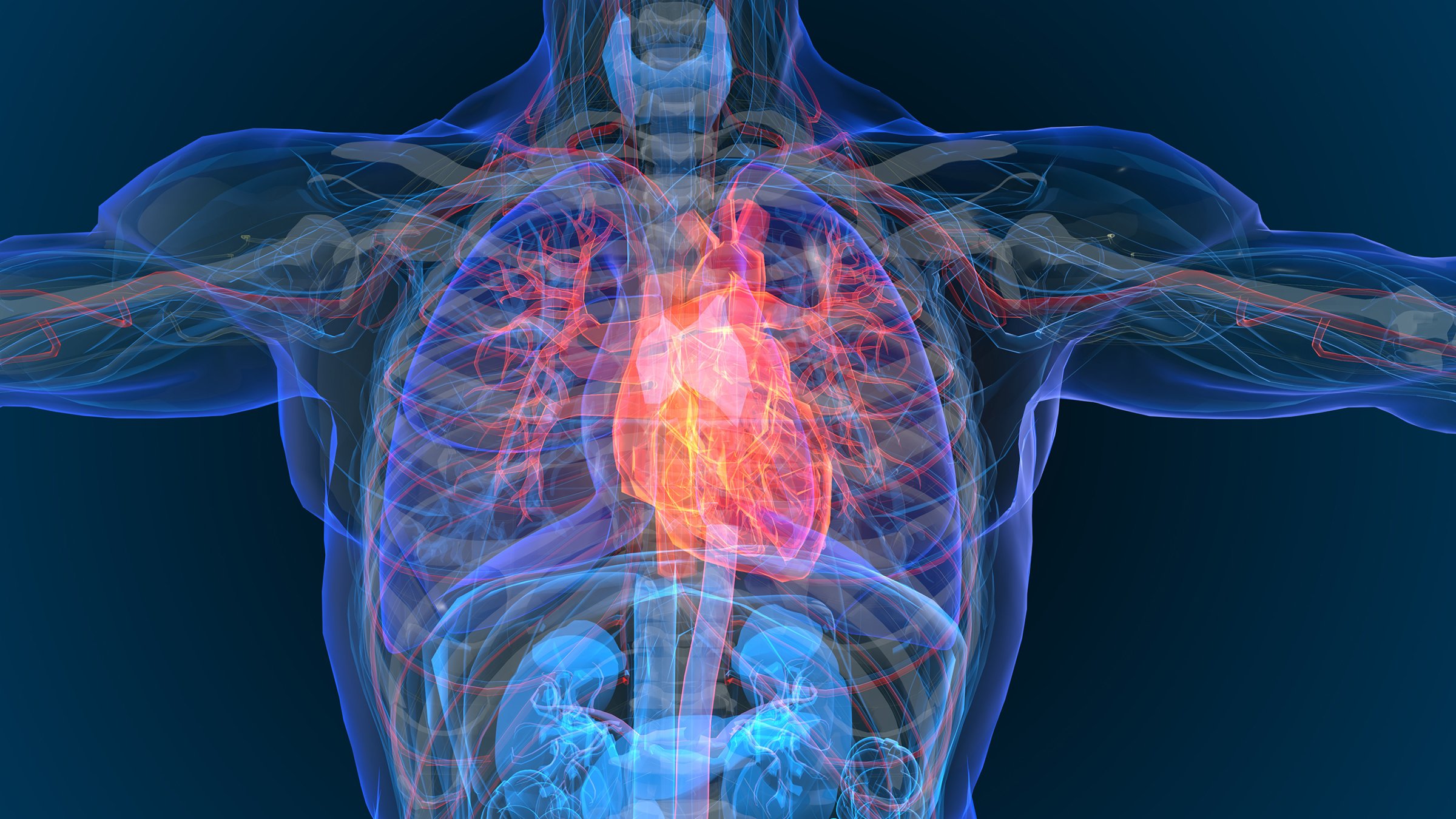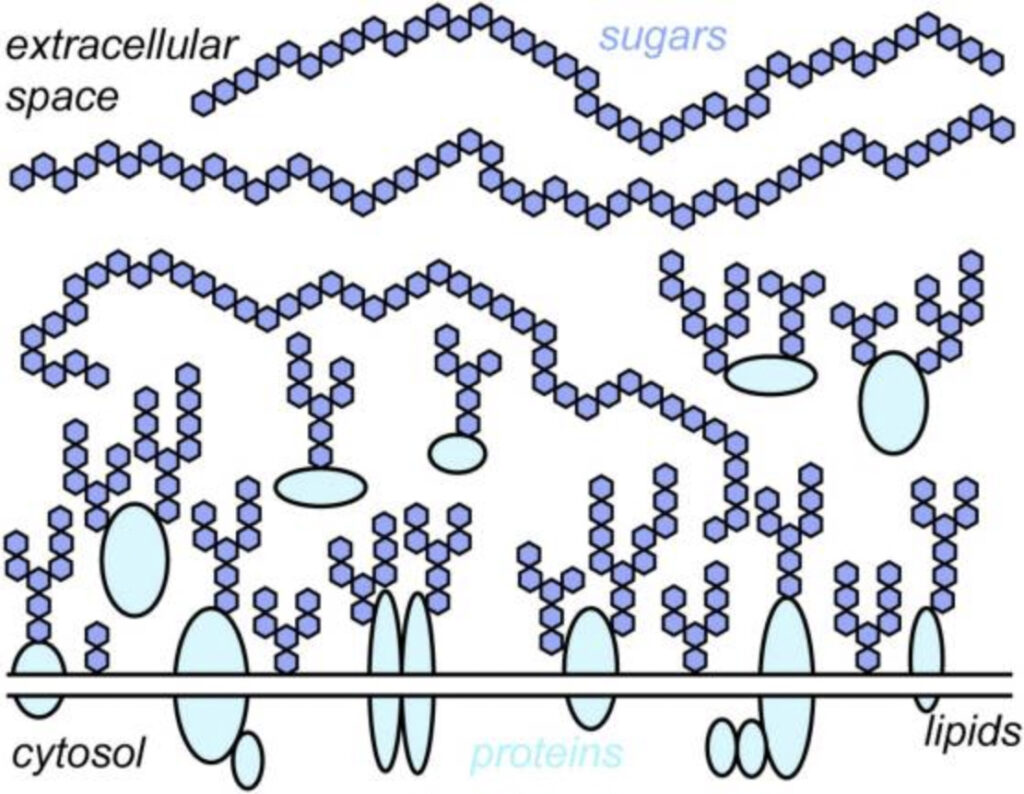
The Glycocalyx: Could This Gel Help Your Cells Ward Off Heart Disease?
We’re often judged by the clothes we wear. Your clothes may be the deciding factor on the first impression you make, landing a new job, or getting that promotion at work.
Your cells also have “clothing” – a dynamic, specialized layer of sugars called the glycocalyx. As scientists learn more about this gel-like layer, they are also realizing its far-reaching roles in human health.
In this article, we’ll discuss what the glycocalyx is, the role it plays in your body, and how measuring your glycocalyx health can help you avoid chronic disease.
What is the Glycocalyx?
The glycocalyx (which translates to “sweet husk”) is a term that refers to a meshwork of sugars and the proteins and lipids (fats) to which they’re anchored.1 “Sweet” refers to the various sugar molecules, like glucose and mannose, that are its key building blocks, while “husk” indicates the location of the sugars.
Like clothing for your cells, these sugars cloak the cell membrane and allow the cell to interact with the extracellular space.2
The hair-like resemblance of the glycocalyx can be seen in the figure below.

Scientists have uncovered numerous critical functions of the glycocalyx, a few of which include:
- Regulating circulation4
- Controlling inflammation5
- Enabling sperm to recognize and bind to eggs6
- Protecting your body against foreign pathogens7
- Defending against cancer8
Your glycocalyx is constantly breaking down and repairing itself. But certain factors can cause disruption and degradation that could make it difficult for your glycocalyx to recover, such as:
- Aging9
- Certain diets (ex: high-salt diets)10
- Lack of exercise or high-intensity exercise11
- Trauma12
- Inflammation13
- High blood sugar14
- Hemorrhagic shock15
- Ischemia-reperfusion injury (damage caused when blood supply returns to tissue after a period of diminished oxygen)16
- Chronic illnesses (ex: diabetic cardiomyopathy)17
The Importance of Your Endothelial Glycocalyx
Your tissues and organs rely on a healthy network of blood vessels to deliver the nutrients and oxygen they need to function. Your vascular system also removes waste from your organs.
To perform all of its functions, your vascular system relies on a thin membrane that lines the inside of your blood vessels called the endothelium. While a single layer of cells might not seem like much, researchers now consider the endothelium an active organ that controls the passage of substances from your blood to your tissues.
So it may not be surprising that the endothelial glycocalyx has found itself in the limelight in our effort to prevent and/or treat vascular diseases. Your endothelial glycocalyx is both the largest surface organ at 10,000 square feet and the longest organ in the body at 60,000 miles end-to-end.18
And we now know that your endothelial glycocalyx helps keep you healthy in 3 critical ways:
- It regulates healthy blood flow. The glycocalyx stimulates the production of nitric oxide (NO). Nitric oxide is a regulatory molecule that regulates blood flow and vascular tone (the contractile activity of blood vessels). It also blocks platelet clumping and leukocyte (immune cell) binding, and controls smooth muscle proliferation.19,20 The glycocalyx, which stores antioxidants, works with nitric oxide to increase blood flow to organs as needed (ex: during exercise).
- It maximizes distribution of nutrients and oxygen. When the demand for blood flow increases, nutrients and oxygen have to be able to get where they need to go. When you think of the vascular system, you might think of veins and arteries – both of which make up the macrovasculature. But the microvasculature consists of 3 types of small blood vessels — capillaries, arterioles, and venules.21 These microvessels are ultimately the ones responsible for facilitating nutrient exchange and oxygen transport to cells.22 Microcirculation – the network of microvessels – is arguably the most important part of your cardiovascular system.23 Your microvasculature could be breaking down – and you may not even know it. Without it, your organs become nutrient-deficient, leading to a downward spiral of chronic illnesses. A healthy glycocalyx may allow for more protection against various diseases.24
- It shields your entire vascular system from damage. Your endothelial glycocalyx also protects your microcirculation by regulating inflammatory reactions and preventing fluid leakage and blood clots.25
Perhaps the most well-known significance of an intact endothelial glycocalyx is its role as a physical barrier to certain substances in the blood, such as inflammatory cells, low-density lipoprotein (LDL), and platelets.26
For example, a damaged glycocalyx allows LDL particles to enter the space under the endothelium, where they clump together. This then triggers immune cells called monocytes to enter the same space in an effort to remove the LDL. Ultimately, this leads to the formation of a blood clot, which impedes blood flow.27
Some researchers believe glycocalyx deterioration may trigger age-related cardiovascular diseases. In one study, researchers observed a degradation of endothelial glycocalyx thickness in mice by 12 months of age, which corresponds to early middle-age in humans. This finding suggests that a degraded glycocalyx may leave the endothelium vulnerable to further problems.28
So what does all of this mean? It means a plan to maintain or improve your health – regardless of your age – should involve optimizing the function of your endothelial glycocalyx.
Testing Your Microvascular Health With GlycoCheck
As we’ve seen so far, a healthy microvascular system is essential for maximizing your health potential. Researchers and doctors are now able to assess the health of your microvessels using a simple system called GlycoCheck.
GlycoCheck is the only automated imaging device capable of measuring the health of your microcirculation, the tiny vessels that make up 99% of the surface area of your vascular system.
GlycoCheck evaluates a variety of parameters (more on this below) to produce a systemic MicroVascular Health Score using the data it collects.
Lower MicroVascular Health Scores are linked to:29
- Diabetes
- Hypertension
- Heart disease
- Kidney disease
- Stroke
- Dementia
- Septic shock
- Inflammatory disorders
- Compromised immunity
- Cancer metastasis
- Long-haul COVID-19 complications
For any test to be valuable, its results must be reproducible. In other words, the test should reproduce similar results every time it’s run. One study involving 42 smokers found that the GlycoCheck test measurements were not only reproducible, but that their reproducibility increased as more measurements were taken.30
The best part of the GlycoCheck test is that it’s 100% non-invasive. You simply place the device under your tongue and let it work. In a matter of minutes, GlycoCheck measures and analyzes 100,000 vessels, with 1,000 measurements calculated per vessel. That’s over 100 million calculations.
Understanding Your MicroVascular Health Score Report
Here are the parameters you’ll see on your MicroVascular Health Score report:
- Capillary Density D4-D6: This represents the number of capillaries with a diameter of 4 to 6 microns. A higher number is better because it suggests that your capillary network has a higher capacity to get nutrients where they need to go.
- CBV (Capillary Blood Volume) Recruitment Capacity: This measurement shows the additional number of functional capillaries that can be engaged when your blood flow goes up. It helps us determine if your capillaries can increase the supply of nutrients to your tissues and organs as needed (ex: during exercise). A higher score is better.
- Capillary Blood Volume Dynamic: The maximum capillary blood volume when all of your available capillaries are engaged at high blood flow levels. Again, a higher score is better.
- PBR (Perfused Boundary Region) Flow Corrected: A damaged glycocalyx allows red blood cells to penetrate. The PBR flow shows the level of damage. In this case, the lower the number, the better. A lower number means a thicker glycocalyx to protect your capillaries.
- MicroVascular Health Score: This is your overall score based on the parameters above. A higher score here means better microvascular health. It suggests your capillaries are able to deliver nutrients and oxygen to and remove waste and carbon dioxide from your organs and tissues. Most healthy people have a score between 3.0 and 7.0.
GlycoCheck Functional Medicine Test in Nashville, TN
Hippocrates wrote this about blood vessels: “The vessels communicate with one another and the blood flows from one to another…they are the sources of human nature and are like rivers that purl through the body and supply the human body with life.”31
As we learn more about our vascular system, we’re also discovering that our glycocalyx plays a critical role in our ability to enjoy a richer, fuller life.
GlycoCheck is used in over 140 academic research hospitals worldwide and is supported by over 80 peer-reviewed published papers.
We’re proud to be one of the few clinics in the United States to offer GlycoCheck to our MaxWell Clinic patients.
Patient Guidelines for the 24 Hours Before Your GlycoCheck Microcirculation Assessment
Before coming to your appointment, we ask that you do the following:
- Avoid eating for 4 hours prior to testing.
- Don’t exercise for 12 hours prior to testing.
- Don’t consume alcohol within 24 hours of your appointment.
- Drink at least 1 quart of water 1 hour before your test.
- Avoid drinks with caffeine on the day of your test.
- Rest for 15 to 20 minutes prior to testing to reduce your stress level.
If you’re in the Nashville area and wish to become a patient at MaxWell Clinic, we’d be honored to help you optimize your health. Schedule a free 20-minute discovery call with our New Patient Coordinator to learn more today.
References:
- https://www.ncbi.nlm.nih.gov/pmc/articles/PMC7174505/
- https://www.ncbi.nlm.nih.gov/pmc/articles/PMC7174505/
- https://rupress.org/jcb/article/219/1/e201910070/133536/Don-t-sugarcoat-it-How-glycocalyx-composition
- https://www.ncbi.nlm.nih.gov/pmc/articles/PMC4828893/
- https://www.hindawi.com/journals/mi/2014/694312/
- https://academic.oup.com/humupd/article/5/4/302/653560?login=false
- https://www.frontiersin.org/articles/10.3389/fcell.2020.00253/full
- https://www.frontiersin.org/articles/10.3389/fcell.2020.00253/full
- https://journals.physiology.org/doi/full/10.1152/ajpheart.00104.2018
- https://journals.physiology.org/doi/abs/10.1152/ajpheart.00656.2021?journalCode=ajpheart
- https://physoc.onlinelibrary.wiley.com/doi/full/10.1113/EP085887
- https://www.ncbi.nlm.nih.gov/pmc/articles/PMC4828893/
- https://www.ncbi.nlm.nih.gov/pmc/articles/PMC4828893/
- https://www.ncbi.nlm.nih.gov/pmc/articles/PMC4828893/
- https://www.ncbi.nlm.nih.gov/pmc/articles/PMC4828893/
- https://www.ncbi.nlm.nih.gov/pmc/articles/PMC4828893/
- https://link.springer.com/article/10.1007/s00125-022-05650-4
- https://www.aana.com/docs/default-source/aana-journal-web-documents-1/jcourse5-1213-p473-480.pdf?sfvrsn=468548b1_6
- https://www.ncbi.nlm.nih.gov/pmc/articles/PMC5510764/
- https://journals.plos.org/plosone/article?id=10.1371/journal.pone.0117133
- https://www.ncbi.nlm.nih.gov/books/NBK54123/
- https://www.ncbi.nlm.nih.gov/pmc/articles/PMC7114900/
- https://www.ncbi.nlm.nih.gov/pmc/articles/PMC7114900/
- https://www.sciencedirect.com/science/article/pii/S193152442200069X
- https://pubs.acs.org/doi/10.1021/acs.iecr.1c03074
- https://pubs.acs.org/doi/10.1021/acs.iecr.1c03074
- https://pubs.acs.org/doi/10.1021/acs.iecr.1c03074
- https://www.ncbi.nlm.nih.gov/pmc/articles/PMC7055464/
- https://glycocheck.com/patients-tested-glycocheck/
- https://www.ncbi.nlm.nih.gov/pmc/articles/PMC7757800/
- https://www.annalsthoracicsurgery.org/article/S0003-4975(00)02556-X/fulltext
Disclaimer:
This blog provides general information and discussions about health and related subjects. The information and other content provided in this blog, website or in any linked materials are not intended and should not be considered, or used as a substitute for, medical advice, diagnosis or treatment. This blog does not constitute the practice of any medical, nursing or other professional health care advice, diagnosis or treatment. We cannot diagnose conditions, provide second opinions or make specific treatment recommendations through this blog or website.
If you or any other person has a medical concern, you should consult with your health care provider or seek other professional medical treatment immediately. Never disregard professional medical advice or delay in seeking it because of something that you have read on this blog, website or in any linked materials. If you are experiencing a medical emergency, please call 911 or call for emergency medical help on the nearest telephone immediately.
